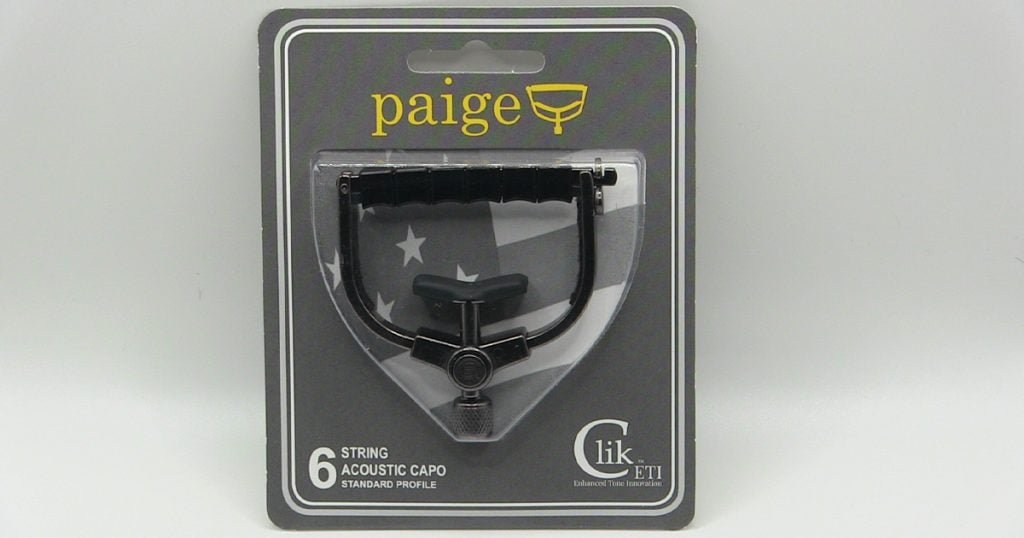Paige Clik ETI Guitar Capo
In 1988, a tool and dye maker named Bryan Paige couldn’t find a capo that kept his guitar in tune. So he used his machining skills to design and make his own. Paige’s affordable, practical design caught on, and soon, his Michigan-based company found international success with its understated but innovative design. Today, you can buy a Paige capo for banjo, mandolin, electric guitar, classical and 12-string guitars, and more.
The Clik ETI guitar capo Paige sent Bluegrass Unlimited for review is one of their most popular models, upgraded to include a true innovation in capo design the company calls ETI (Enhanced Tone Innovation). Consisting of individual, pre-formed radiused pads that cradle each string individually behind the fret when tightened, these plastic and rubber radiused “outserts” offer several advantages.
The company’s web copy claims, “the Paige Clik ETI features a patented bar system. In essence the bar acts like a nut requiring little tightening. This greatly reduces the need for retuning when you move the capo. The bar system consists of specialized outserts made of a nut-like material individually molded for each string. Each outsert has a (concave) radius to ensure that the string always positions in the center even after string bending. Underneath the individual pieces lies a rubber cushion that allows for even pressure and adapts to the radius of the fretboard.” An added bonus is the outserts are fully replaceable. In use, I found that the ETI system worked just as promised, delivering a clear tone without over-tightening or going audibly sharp.
Another valuable innovation is the Clik’s quick-release button. Located at the junction of the yoke and tightening screw, the Clik button releases the tension on the capo so it can be moved easily without fully unscrewing it and releasing the clasp. Available in a variety of standard widths, the Paige capo ships with a 16” radius bar that should fit most modern and vintage bluegrass guitar fingerboards.
For $90, the Paige Clik ETI capo looks industrial and rugged compared to high-end capos like the Elliott, as well as its own newly launched Paige Pro capo. The screw threads on the test unit are slightly rougher compared to the higher-end competition. But that issue should smooth out after it wears in. Visually, the Paige has its own unique appeal. It’s definitely not brightly polished stainless steel or color anodized capo-bling. Instead, Paige brings a kind of classic pickup truck aesthetic that would look right at home on any vintage guitar or banjo.
In use, I found that the hard plastic, rubber-backed Paige ETI outserts to be on the brighter end of the sonic spectrum. One issue for me personally was I had a bit of difficulty getting the J-shaped clasp to release from the locking tab. But I have thick, blunt fingertips and short nails, so I expect other players will have little difficulty.
For more than 30 years, Paige has given serious bluegrass players a product that is well-designed and made, that’s attractive in an understated almost steampunk aesthetic, and works simply and reliably at an affordable price for many. We suspect the new Paige Pro, which we hope to review soon, resolves the issues mentioned here, and provides a worthy competitor to the best instrument capos on the planet. BU will report back when we have the chance to try one. In the meantime, the Paige Clik ETI family of capos, handmade in Michigan, offers a great alternative in today’s market.

